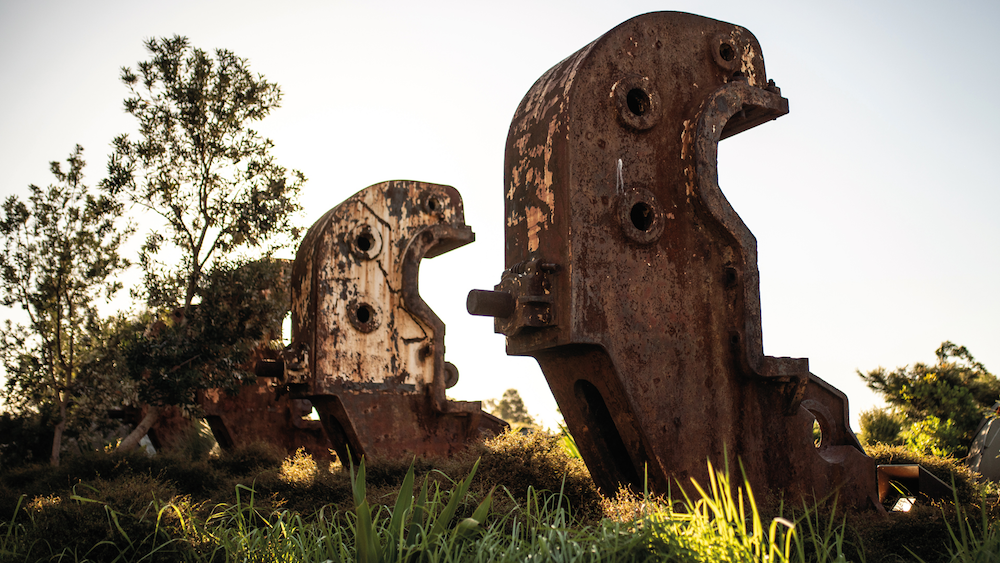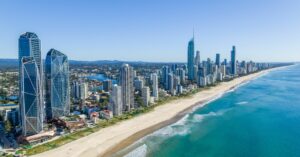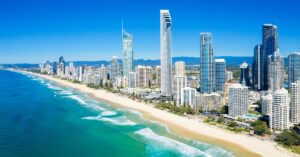Live your best contemporary camp life on Cockatoo Island.
By Anabel Dean – guest writer
Most eastern urbanites know that Cockatoo Island is the largest island within Sydney Harbour.
And, if you’re an arty type, you’d have to have lived in isolation all your life not to know that the World Heritage-listed maritime marvel showcases Australia’s most significant contemporary arts festival — The Biennale of Sydney — running now until June 8.
But when the artists have gone, and their virtual worlds have been disconnected, the spaces inside the former convict settlement and historic shipyard will fall silent again. The rusty cranes, dry docks, tunnels and turbine halls will return to being the strangely awe-inspiring spaces that have made Cockatoo Island one of the best (and largely unheralded) camping destinations on Sydney Harbour.
There, I’ve said it, the ‘c’ word. No matter where you are in the world, there is always ‘camping’, and right now, a row of canvas khaki tents lined with military precision along the waterfront could hardly seem more appealing.
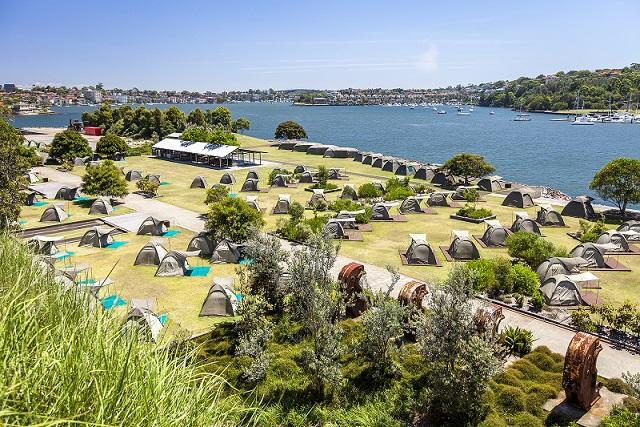
Somebody else has already done all that camp prep, so there’s no need to carry maps, sleeping bags, ice or provisions onto the ferry from Circular Quay, a journey that takes roughly half an hour. How liberating to walk down the gangplank, without convict chains, equipped only with the glamper’s bare essentials of mosquito repellent, toothpaste, sunscreen, tea bags, earplugs and a change of clothes?
The camping scenario is even more attractive if, like me, you have habitually suffered a mattress that stealthily deflates throughout the night-time hours. On Cockatoo, the camp bed is firmly swaddled in linen, with a side table featuring sweet-smelling soaps and fluffy white towels. So really, there’s nothing to do but sit in a reclining camp chair, and share the sunset with the good people of Woolwich on the opposite shore.
A tasting plate and a seafood basket with a glass of good wine from Society Overboard café (within strolling distance) is about as hard as camping gets here although you might consider ordering the BBQ pack and work a bit harder for that harbour view.
Speaking from experience as an overnight stayer – just once last summer – I recall the late afternoon southerly buster that ripped through the campsite but caused barely a ripple under the canvas. We drifted off to sleep to the accompaniment of passing ferries and dragon boat racers but woke abruptly at 6.04 am to a loudhailer, a rowing scull cox calling “stroke, stroke, stroke”.
The peaceful lapping of a waterway uncluttered by human flotsam and jetsam had, by then, existed for perhaps barely an hour. Or so it seemed. No two ways about it, the urban waterfront can be noisy, though this strangely added to the ambience of a rocky ganglion midway between the Parramatta River and the suburb of Balmain.
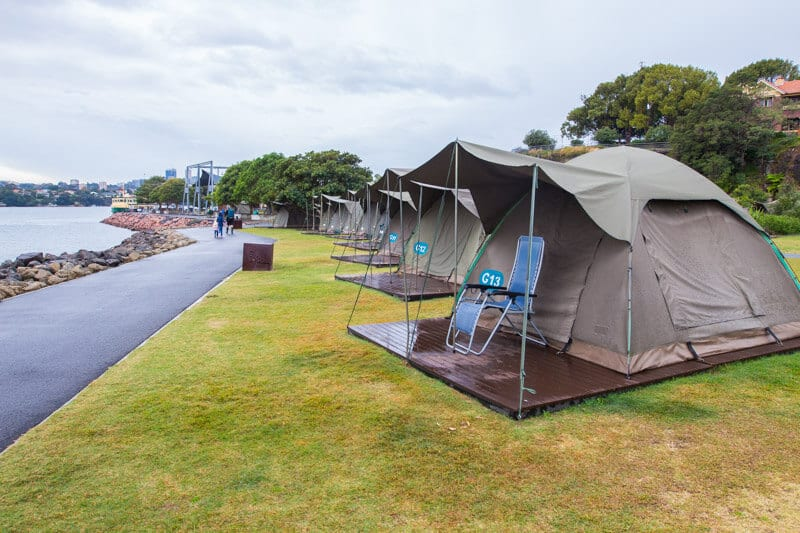
The breakfast pack (in a box now collected from the Societe cafe on arrival) consists of eggs, bacon and buns. We cooked on shared BBQ facilities in the open kitchen area, mingling congenially over hotplate, tongs and travel stories. An early-rising glamping couple were celebrating their 40-something wedding anniversary. Paradise is a nice little present; you have to agree?
Weekends on Cockatoo are usually busy with campers and day visitors, so we congratulated ourselves for choosing a Tuesday night on a deserted island with only three other inhabitants. The experience was intimate, and sort of oddly familiar, even after my mate was cast of on the 7 am ferry to work leaving me in solitary confinement.
There’s plenty to captivate even when the Biennale is not in full swing. I wandered into the shadows of the past, looming above on the cliff top, and among the stony convict quarters. Within a few short steps, 200 years of history had passed by, yet Sydney’s day-trippers had still not risen from their beds.
Related reads: Your Ultimate Guide to WA’s Public Silo Trail
Free access across the island provided the chance to clamber alone around the old warehouses, past the convict cells, grain silos and sandstone slipways. Who knew that this was part of a penal settlement for 30 years (from 1839) for criminals who had reoffended while in Port Jackson? Poor things. Cockatoo was even worse than Port Arthur.
A pall still hangs heavily over the ruins of the vile reformatory for girls who had been incarcerated for delinquency or abandonment. An industrial school for wayward boys followed before shipbuilding became dominant on the island for almost a century. Nostalgia still creaks from the monstrous cranes that were used in the long-gone industrial era of the shipyard, and dry dock, which closed in 1992.
This year’s biennale theme – Nirin – means ‘edge’ in the language of the Wiradjuri people of western NSW. It’s a First Nations-led initiative to reflect on the world today and challenge the dominant narratives while proposing pathways for healing in the future.
A tent on the edge of an island could hardly be a more appropriate site from which to contemplate these ideas. And, of course, the other ‘’c’ word, as in COVID-19.
Details
Head to Cockatoo Island to find out how your can arrange your camping getaway along its Waterfront Campground.
Anabel Dean is a freelance travel journalist. You can follow her on Instagram @anabel.dean20
Please note: be mindful of social distancing in all destinations. Do not travel if you need to be in self-quarantine. Be up to date with the latest COVID-19 news and alerts from the Australian Government Department of Health here.
Related reads: Australia travel
Feature Image: Cockatoo Island



